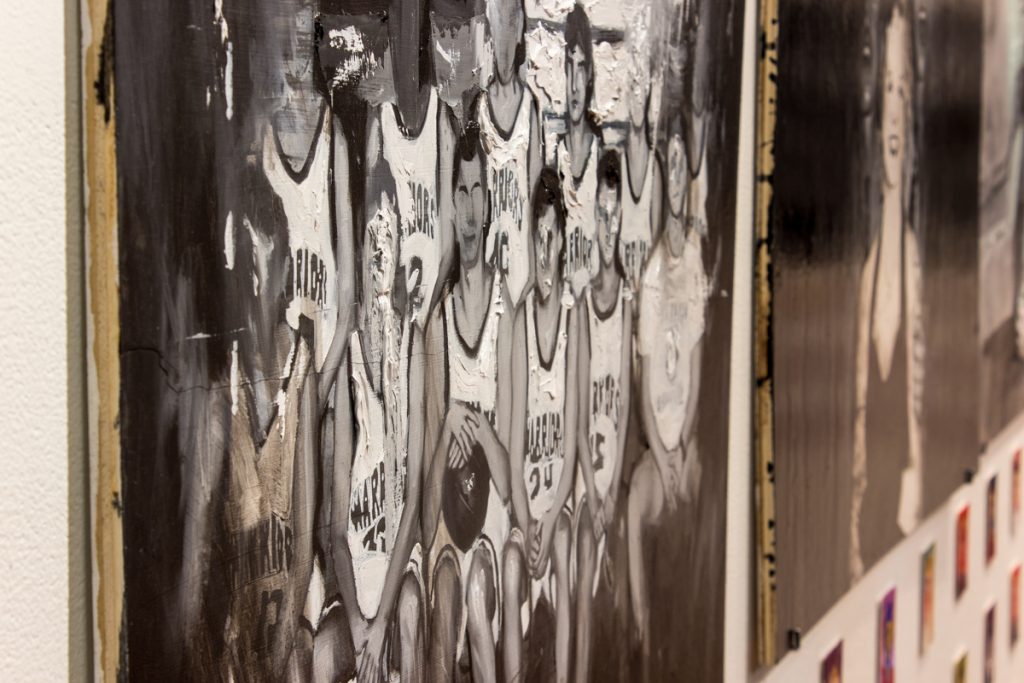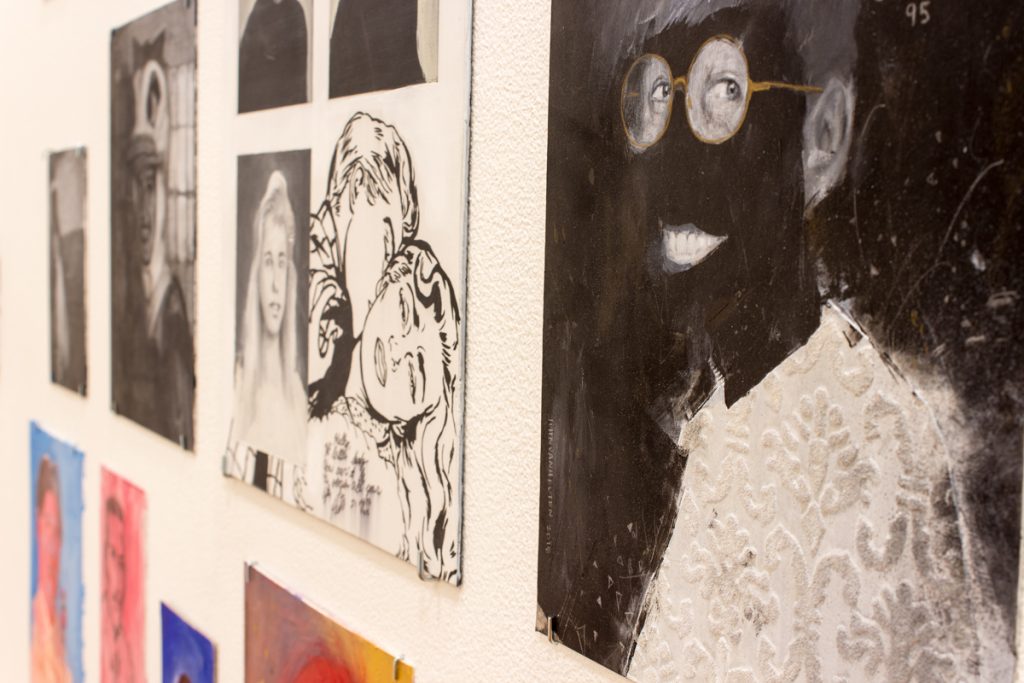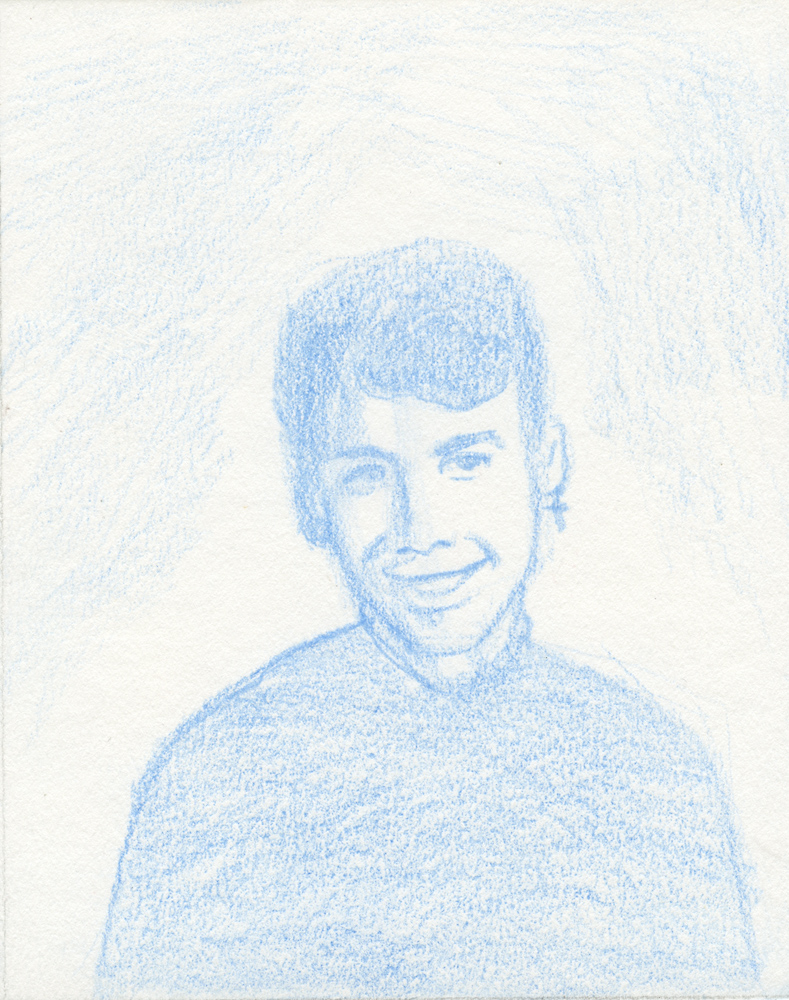Utilizing my distance as an outsider to individuals and their memories, I co-opt the photographic vernacular to establish a new kind of intimacy between painting and photographic mediums, and collective memory and identity. The uncanny, a strangely familiar yet uncomfortable feeling, is the primary aesthetic device used in many of my projects. The painting medium, specifically, is used to remove the photorealism and translate it to something akin to the blurriness of memory, while still maintaining a familiarity to the viewer. In my latest project, Youth in Crux, I unarchived yearbooks from Western New York in the early 1990s. My aim with Youth in Crux was to tap into a collective nostalgic memory and illustrate the time period of youth as critically important to social identity, yet oft neglected. To do this, I researched the identity crises young adults face as they search for meaning and belonging in a world of spectacle and external pressures. I then examined the photos and painted the situations through a new challenging perspective that involved taking a well-informed critical eye toward the contexts, while simultaneously imparting the empathy I felt toward the subjects as I thought about their lives (or how others might feel by viewing the all-too-familiar moment again). These paintings depict the subjects falling somewhat outside of the nostalgic frame, which is intended to force the viewer to contemplate these anxieties of youth. These moments now exist in my paintings as nostalgic memorials to potential in expressionistic portraits, or as lost identities in blurred black and white brushstrokes, obscured by banal social contexts.












































































































































































































